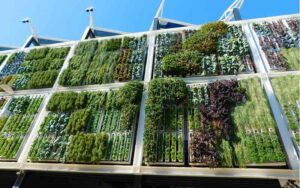The Changing Face of Agriculture in Gujarat, Cash and Horticulture Crops Reign Supreme
Ahmedabad: Over the past three decades, Gujarat’s agricultural landscape has undergone a significant transformation, with cash crops and horticulture crops steadily replacing traditional staples like pulses and cereals. This shift reflects changing market demands, climate conditions, and technological advancements in the agricultural sector.
Traditionally known for its production of pulses and cereals, Gujarat has seen a gradual decline in the cultivation of these crops. Factors such as erratic weather patterns, water scarcity, and declining profitability have contributed to farmers seeking alternative crops that offer better returns on investment.
Read More: Farming Faces Climate Stress in Jammu and Kashmir, Agriculture Struggles Amid Changing Climate
Cash crops like cotton, groundnut, and sugarcane have become increasingly popular among Gujarat’s farming community due to their higher market value and demand both domestically and internationally. These crops not only generate higher income for farmers but also require less water compared to pulses and cereals, making them more sustainable choices in regions facing water scarcity.
Furthermore, the rise of horticulture crops such as fruits, vegetables, and spices has added diversity to Gujarat’s agricultural sector. Improved infrastructure, better transportation networks, and increased awareness of healthy eating habits have fueled the demand for fresh produce both within the state and in neighboring regions.
Government initiatives and support programs have also played a crucial role in promoting the cultivation of cash crops and horticulture crops. Subsidies on seeds, fertilizers, and irrigation equipment, coupled with training and extension services, have encouraged farmers to adopt new agricultural practices and diversify their crops.
Read More: International Horticulture and Floriculture Exhibition Blooms in Pune from November 24
While the shift towards cash crops and horticulture has brought economic benefits to many farmers in Gujarat, challenges remain. Market volatility, price fluctuations, and the need for sustainable farming practices are among the issues that farmers continue to grapple with.
As Gujarat’s agricultural sector continues to evolve, stakeholders are exploring innovative solutions to ensure the long-term viability and sustainability of farming practices in the region. Adapting to changing market dynamics and investing in technology and research will be key to navigating the future of agriculture in Gujarat.

















